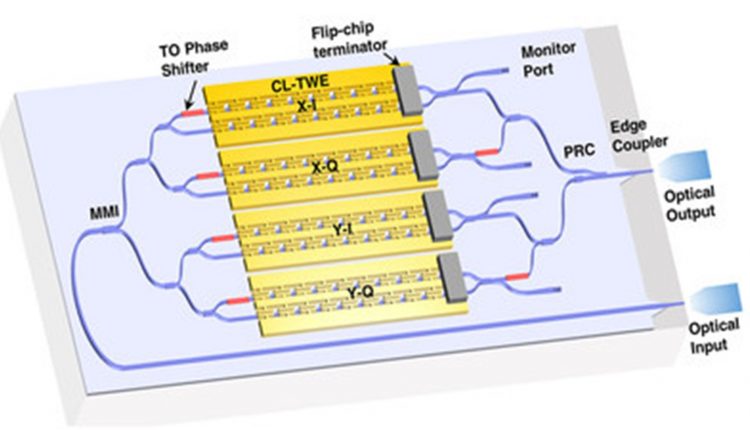
Thin-Film Lithium Niobate Modulator Breaks Performance Records
Over the past decade, coherent optical transmission technology has been key to increasing the capacity of optical networks, and the most critical components of this transmission technology are the coherent optical modulators on the transmitter side. These modulators directly define overall system performance.
Xinlun Cai, of Sun Yat-sen University, led researchers to design and fabricate a thin-film lithium niobate (TFLN) dual-polarization in-phase and quadrature (DP-IQ) modulator, setting new world records in four performance metrics–half-wave voltage, modulation bandwidth, insertion loss, and single-wavelength net bitrate. The team will present findings at the Optical Fiber Communication Conference and Exhibition (OFC) on Thursday, 10 March 8:30-8:45 at the San Diego Convention Center.
Legacy lithium niobate DP-IQ designs are typically bulky and power-consuming, limiting their applications in next-generation optical networks. Materials used often suffer from cross-modulation between the phase and amplitude dimensions and nonlinear responses, so they are less than ideal in terms of performance. In comparison, TFLN material brings new life to lithium niobate technology, ensuring a high-index contrast waveguide, significantly reducing the size of lithium niobate modulators, and simultaneously allowing for much improved half-wave voltage and modulation bandwidth. It maintains the excellent characteristics of lithium niobate, i.e., no amplitude-phase cross-modulation.
The team plans to make the device footprint even smaller and make the devices in a semiconductor foundry, a milestone for actual industry application.
